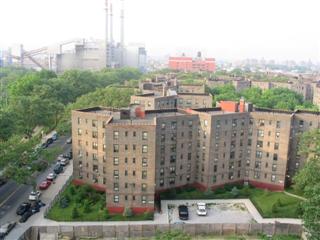
NEW YORK, NY - The community center at Parkside Houses, a public housing complex in the Bronx, has one floor, four rooms and many uses. Adults work on their resumes on one of 10 computers or play Scrabble on Friday nights. Teenagers congregate around the pool tables in the game room or train for competition as part of the Parkside Knights track and field team. But the center, on the ground floor of a red-brick building across from a wooded stretch of the Bronx River Parkway, is really a children's place.
After school on Thursday, about a dozen children sat in the multipurpose room making Father's Day cards out of construction paper and buttons while several boys and girls played chess and video games down the hall. They ate turkey and cheese sandwiches. They got help with their homework. Andre and Giovani Delgado spend their afternoons at the center, waiting for their mother, Ruth Delgado, to pick them up at about 5:30 p.m. Ms. Delgado, a building custodian and single mother, said she trusted the staff and liked the price: $80 a year to enroll Andre, 9, and Giovani, 11, in the center's after-school program.
But Ms. Delgado and other parents are worried about the fate of the center. The city's public housing agency, the New York City Housing Authority, announced last month that budget problems could force it to close Parkside and hundreds of other community centers, senior centers and recreational, job-training and educational programs throughout the five boroughs.
Ms. Delgado said that she made $11.10 an hour and could not afford to hire a baby sitter. She would be left with one option if the center closed: "I'm going to have to get my oldest one a key so they can be home by themselves," she said, shaking her head.
The proposed cuts would affect hundreds of thousands of children, adults and older people who live in the city's 343 public housing complexes, as well as thousands of others who are not residents but regularly use the centers. The plan has outraged tenants, public housing advocates and City Council members, focusing renewed attention on the New York City Housing Authority's budget shortfall and its financial dealings with the city.
For the authority, the move to cut the centers and programs illustrates the severity of its financial crisis, threatening to reshape an agency that built its national reputation on providing low-income families with not only bricks-and-mortar shelter but also quality-of-life services. For tenants, it would simply mean less: fewer activities and fewer places to socialize and take their children.
The controversy over the agency's plan has not played out in typical New York fashion. Tenants and their supporters are sympathetic for the most part to the agency's financial troubles and place much of the blame on the city, state and federal governments, which they say have been cutting financing for public housing for years. "They basically have no other choice," Councilman Erik Martin Dilan of Brooklyn, chairman of the Council's Housing and Buildings Committee, said of the agency's plan.
Still, there have been questions about whether the authority — the city's biggest landlord, with a $2.8 billion operating budget, has done all it could to tighten its finances before cutting popular and important programs. Asked that question by Councilman Robert Jackson of Manhattan at a recent hearing, Tino Hernandez, the agency's chairman, said, "I don't go with hat in hand to the federal government, to the state, the City Council, the mayor, if we have not put our house in order."
The public housing population is made up of predominantly low-income and moderate-income families. The average household income is $22,119, and the average monthly rent for a one-bedroom unit is $281. Many residents live in neighborhoods wher
Source: New York Times